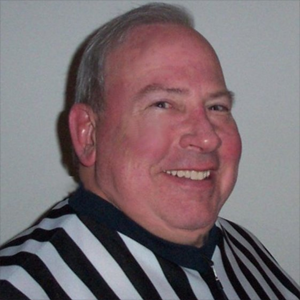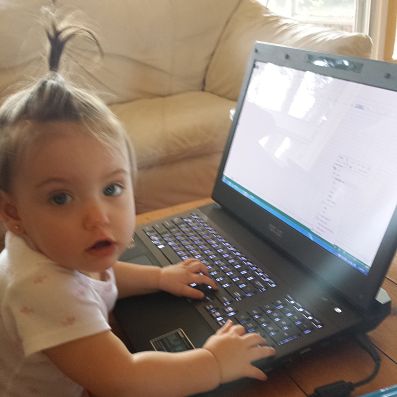
Rndballref
20 Years Experience
Chicago, IL
Male, 60
For twenty years I officiated high school, AAU and park district basketball games, retiring recently. For a few officiating is the focus of their occupation, while for most working as an umpire or basketball referee is an avocation. I started ref'ing to earn beer money during college, but it became a great way to stay connected to the best sports game in the universe. As a spinoff, I wrote a sports-thriller novel loosely based on my referee experiences titled, Advantage Disadvantage
When I umped little league baseball, there were times when I admonished a player directly - most often a pitcher for disrespectful body language in protest (slamming his mitt after a call four call, shaking his head purposefully when not getting a strike called, etc). Depending on how grievous the infraction determined my intensity.
One time while umping a 14 year old tournament game a pitcher was trying to get strike calls for balls 2 inches off the plate. After watching his demonstrations a few times, I stopped the game and took three paces toward the mound. I said loud enough for all to hear, "pitcher, you are not as good as Greg Maddox and I will not give in to your pitches off the plate. I suggest you challenge the hitters with strikes, or at least stop your sophomoric demonstrations. Or I can solve this for you and throw you out of the game". The coach came out to talk to me and instead of protesting he thanked me for humbling this young man.
In general, in basketball no good comes from arguing or negatively interacting with the crowd or the players. Mature refs avoid this.
No violation. Normally, an airborne player is considered to be from the court position where he was when he jumped. So, in your example, Player B jumps from his front court, catches the ball and lands in his backcourt (partially), This would normally be a violation. However there are two situations where this principle does not apply. 1) either team on a throw in, and 2) a defensive player intercepting a pass (exactly your scenario). No violation because of exception # 2. Play on.
In NFHS rules, a shooter can retrieve an airball shot before any other player touches the ball as long as the shot was a legitimate try.
If, in the opinion of the referee the player started the "habitual movement to shoot at the basket" and is fouled it is a shooting foul even if the player cannot complete the shot or dumps the ball off.
Veterinarian
 How do you break the news to a kid when his pet dies?
How do you break the news to a kid when his pet dies?
Sr. Software Engineer
 Are those $12,000 "learn to program" bootcamps a rip-off?
Are those $12,000 "learn to program" bootcamps a rip-off?
Rap Promoter / Manager
 Do venues you rent express concern about a higher risk of violence because it's a rap concert?
Do venues you rent express concern about a higher risk of violence because it's a rap concert?
The NFHS rule book lists one of the officials' duties is "granting time-outs". It does not specify that the words "time-out" are used. For example coaches can get a time out by signaling his hand in a "T". So if I heard a coach yelling time, time, time, I would grant that time a time-out.
you may step on your non pivot and then lift your pivot but it you step down on what was your pivot foot, or slide or hop on your non-pivot foot it is traveling
The same rules apply to this situation as blocking out when rebounding. If the "inside" player moves to the spot where the other player is trying to get to, it is ok as long as the inside player gets there before the other player steps or jumps toward that spot. Under this definition, yes, the inside player can keep moving.
-OR-
 Login with Facebook
Login with Facebook (max 20 characters - letters, numbers, and underscores only. Note that your username is private, and you have the option to choose an alias when asking questions or hosting a Q&A.)
(A valid e-mail address is required. Your e-mail will not be shared with anyone.)
(min 5 characters)
By checking this box, you acknowledge that you have read and agree to Jobstr.com’s Terms and Privacy Policy.
-OR-
 Register with Facebook
Register with Facebook(Don't worry: you'll be able to choose an alias when asking questions or hosting a Q&A.)